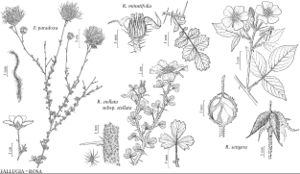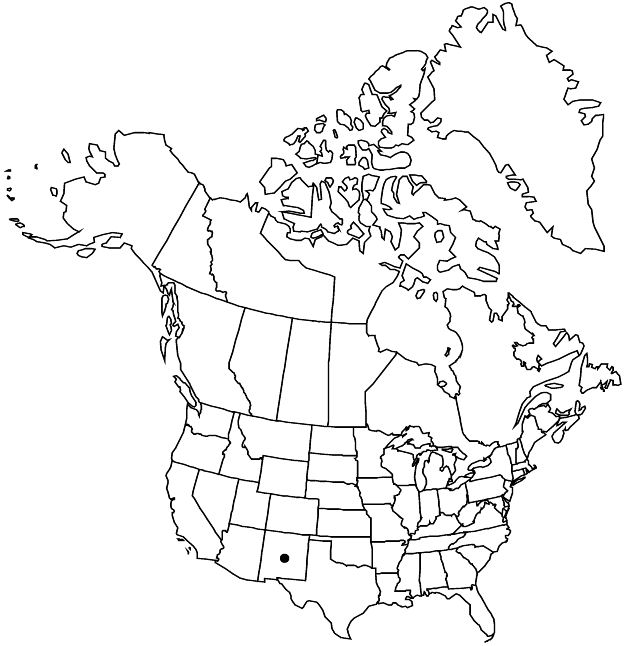Difference between revisions of "Rosa stellata subsp. stellata"
FNA>Volume Importer |
imported>Volume Importer |
||
| (One intermediate revision by the same user not shown) | |||
| Line 42: | Line 42: | ||
|publication year= | |publication year= | ||
|special status= | |special status= | ||
| − | |source xml=https:// | + | |source xml=https://bitbucket.org/aafc-mbb/fna-data-curation/src/2e0870ddd59836b60bcf96646a41e87ea5a5943a/coarse_grained_fna_xml/V9/V9_117.xml |
|subfamily=Rosaceae subfam. Rosoideae | |subfamily=Rosaceae subfam. Rosoideae | ||
|tribe=Rosaceae tribe Roseae | |tribe=Rosaceae tribe Roseae | ||
Latest revision as of 22:54, 5 November 2020
Stems erect, 4–15 dm; distal branches tomentose-woolly, with stellate hairs, sessile- and stipitate-glandular; infrastipular prickles single or paired, largest flattened, 11–13 × 2.5–6 mm, internodal prickles and aciculi sparse, larger, eglandular. Leaves: stipules 4–8 × 1–2 mm, margins ± entire, eglandular or glands sparse, auricles foliaceous; petiole and rachis pubescent, sometimes glabrous; leaflets 3, terminal: petiolule 0.5–1.5 mm, blade obovate, margins broadly 1- or multi-crenate, teeth 3–6 per side, abaxial surfaces tomentulose on midveins, otherwise glabrous. Flowers 4.5 cm diam.; hypanthium densely setose, setae 1–3 mm; sepals 12–17 × 5 mm; petals pink. Hips subglobose or cupulate, 7–13 mm diam., sparsely or densely setose. 2n = 14.
Phenology: Flowering Apr–Sep.
Habitat: Streams, roadsides, openings in pine-juniper woods, dry rocky hillsides and slopes, overhangs in rocky canyons
Elevation: 500–700 m
Discussion
Subspecies stellata is known from the Organ and San Andres mountains in Doña Ana County of south-central New Mexico (W. H. Lewis 1965).
Selected References
None.

